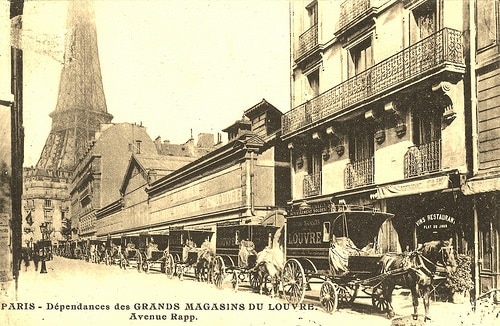Medicinal reading
9 April 2010New to our shelves
12 April 2010Points of reference

If the American Library in Paris – or the internet – provides access to an online version of the information you seek, should the Library still buy and keep the paper version?
The advent of high-speed access to and digitized versions of information poses all kinds of challenges to libraries, but that is the practical question at the heart of all of them. The question as it applies to books is no further than around the corner; as it applies to almost everything else, the question is dead ahead.
With the significant assistance of William Cagle, the retired university librarian at Indiana University, the American Library in Paris is analyzing its periodical and reference holdings with an eye to improving our delivery of services in these key areas. Bill is serving as the second Julia Peterson Dede Distinguished Visiting Librarian at the Library, and he is a dedicated book collector and a seasoned library chief.
“Reference” is the librarian’s term of art for the encyclopedias, dictionaries, atlases, thesauruses, serials (almanacs, yearbooks, indexes), and hundreds of other sources of information that are available for our members on the shelves surrounding the main reading room, and elsewhere.
These are “non-circulating” items – that is, you can’t check them out and take them home. They include everything from the Encyclopedia Britannica to the Statistical Abstracts of the United States to Grove’s Dictionary of Music to the Physician’s Desk Reference to the Complete Encyclopedia of Needlework to the Encyclopedia of Hoaxes.
Our non-paper online resources now are dominated by the Jstor and Ebsco database offerings we make available exclusively to our members – nearly 3,000 periodicals and publications, as compared to our 300. To these will soon be added reference databases the Library purchases to complement or replace paper reference materials.
The professional librarians at the American Library, notably collections manager Simon Gallo and reference manager Kim Lê Minh, have observed what anyone might guess – usage is shifting from the paper reference materials to the electronic ones.
The evidence is anecdotal, but unambiguous: The decreasing frequency of “pages” – requests by patrons for volumes kept in closed stacks; the decreasing number of volumes taken from the reference shelves and left for re-shelving; the contrast between the publication date of a reference work and the currency of the version available on the internet; the tell-tale dust of neglect that collects on many reference volumes in our reading room.
These suggest to us, and to our visiting librarians, Bill Cagle and Leslie Burger of Princeton Public Library, that a healthy winnowing of the reference collection in tandem with a deepening of our electronic references resources is in order. Indeed, it’s happening at nearly every library in the world.
As we move ahead with this careful assessment, we are keen to hear our members’ reports on what you find useful in the reference collection and what you don’t – or perhaps did, but don’t any longer.
You’re most welcome to write me at the Library, about this or anything else, but I hope you will also be willing to take a seven-question survey and record your views so that we can – yes, electronically – tabulate the responses and take what you say into account as we modernize the reference collection.
Thanks for your participation and your comments about all of the above.
Charles Trueheart


